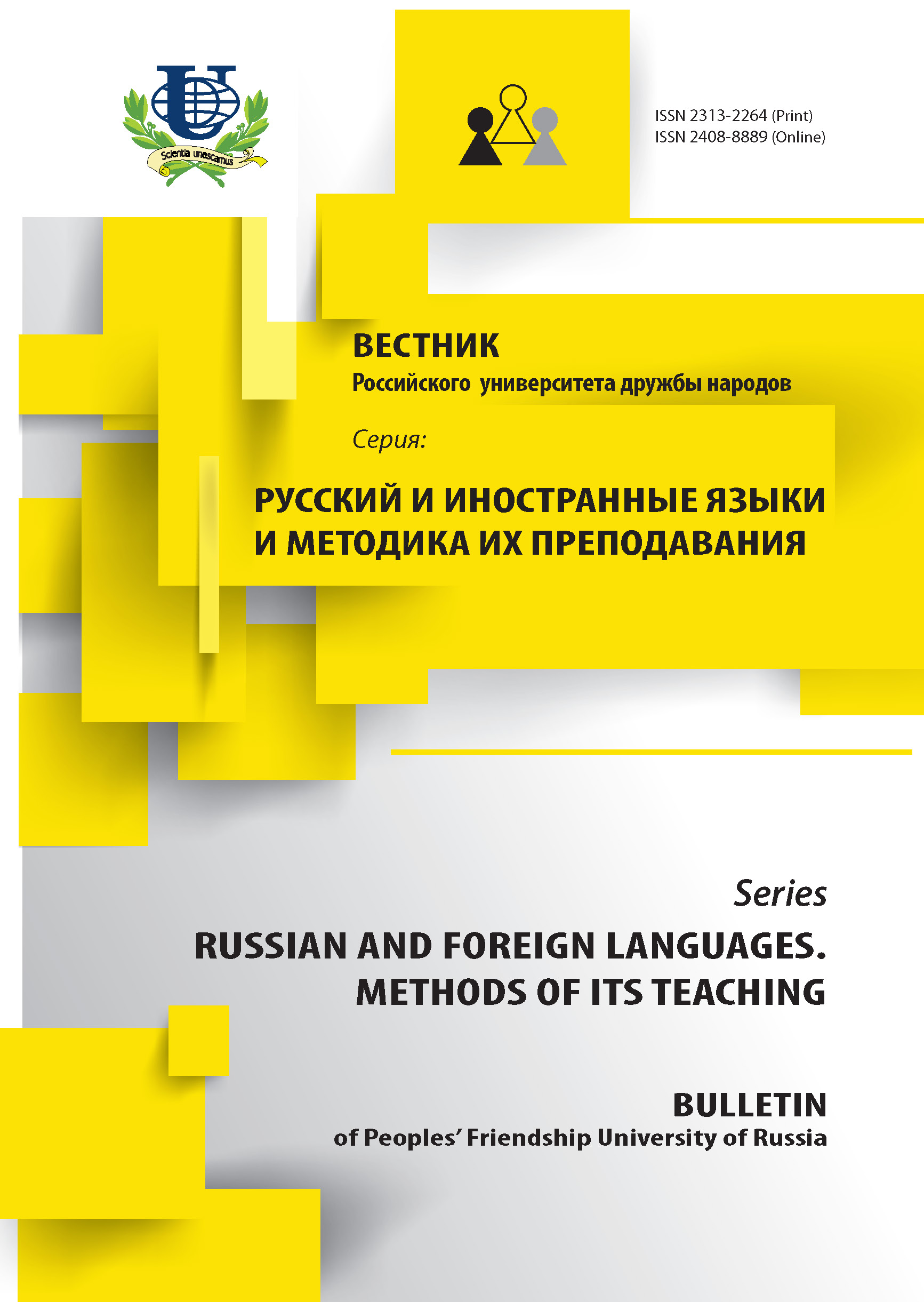THE VERBAL COMPONENT OF SYNTHETIC LINGUAL PERSONALITY: AUTHOR’S NEOLOGISMS(on the material of the rock song “Perestroishche” by Yu. Shevchuk)
- Authors: Ivanov DI1
-
Affiliations:
- Ivanovo State University
- Issue: No 4 (2015)
- Pages: 31-38
- Section: Articles
- URL: https://journals.rudn.ru/russian-language-studies/article/view/13511
- ID: 13511
Cite item
Full Text
Abstract
Within this material we will consider the specific features of author’s neologisms which are not only a key conceptual element of the verbal component of the synthetic lingual personality functioning in the space of the Russian rock culture, but also an efficient instrument of realisation of the cognitive and pragmatic SLP modeling programme. We understand synthetic lingual personality (SLP) as a polysemiotic, polycode cognitive and pragmatic unit existing and developing in several semiotic zones at a time. It may be considered as a particular realisation, a fragment of a discursive personality and at the same time as an independent cognitive and pragmatic subject structure. It has a special internal and external structure. The SLP internal structure includes three main levels: 1) linguosemiotic; 2) cognitive and pragmatic; 3) associative and interpretative. The external formal structure consists of four components: 1) verbal; 2) articulation; 3) music; 4) image.The system of author’s neologisms, a kind of “neoconcepts”, has a special place in the structure of the verbal component of the Russian rock culture representatives’ SLP. Neoconcepts are of a great social importance because of their relevance to the social and cultural environment. This status of lexico-semantic innovations is explained by the fact that neologisation is due to the activity nature of the man’s mind and reflects the linguocreative potential and dynamics of development of the SLP cognitive competence. This type of verbal conceptual codes has an extremely high degree of sense concentration and they may be considered as the most refined conceptual “product”/a result of cognitive and pragmatic SLP intentions. Within this study we apply the cognitive and discursive approach to the inner properties of the neologisation process which reflects the level of SLP cognitive and pragmatic activity. The SLP linguocreative potential expressed in the process of neologisation is determined by: 1) the quality properties of the general cognitive and pragmatic programme of SLP modeling; 2) the specific features of the cultural and socio-political environment where the personality exists. This is especially pronounced in the context of the Russian rock “heroic” epoch.
References
Supplementary files














